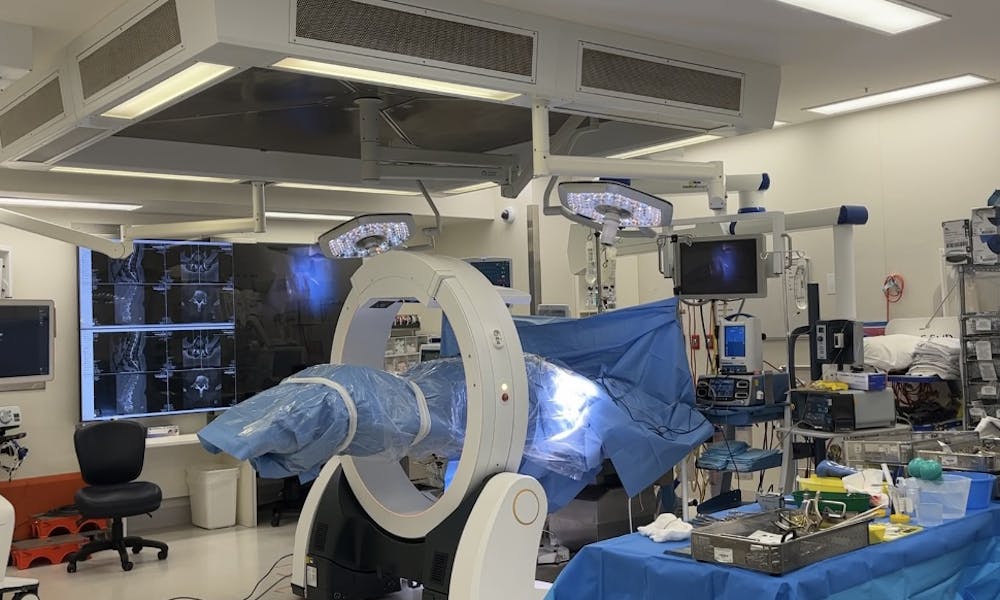A high-tech robotic scanner that significantly improves the accuracy and outcomes of complex surgeries is now being used at the Royal Melbourne Hospital (RMH) – the first at a public hospital in Australia.
The circular mobile imaging system takes high-quality 3D images of patients during and after surgery to precisely determine where an implant or screw needs to be put, and if it has been successful.
The RMH is the first hospital in Victoria to install and use the technology, and the third in Australia, with the first surgery – a lumbar fusion – performed on 6 September.
A physical reference point, positioned on the patient’s spine, transmits back to a specialised screen, enabling neurosurgeons to navigate in real time and pinpoint the exact location necessary for safe spinal surgery.
RMH Director of Neurosurgery Professor Kate Drummond said this would reduce the need for further correctional surgeries, and would make surgery safer with shorter recovery time for patients.
“This machine will ensure every screw is accurately placed in real time, and that we can safely navigate around the spine, even for very complex surgeries,” Prof Drummond said.
“And it will also give us real-time feedback so that, if needed, changes can be made before the patient has even left the operating theatre.”

The lightweight machine has been purpose-built for use in the operating theatre and can be moved from room to room, eliminating the need for traditional x-rays and CT scanners. It also uses less radiation than a traditional x-ray machine, making it safer for both patients and staff.
The robotic component of the machine means it can store information and return to previously saved positions to make treatment faster for patients.
RMH neurosurgeons Bhadu Kavar and Sarah Cain performed the inaugural procedure.
“I feel very privileged to be the first person to have used this particular type of technology in Victoria, and at a public hospital in Australia,” Dr Kavar said.
“But being able to provide patients with the best possible outcome is what really matters.”
The scanner can be used for surgeries including spinal surgery, cranial surgery, Deep Brain Stimulation for Parkinson’s disease treatment, pelvic trauma and Craniomaxillofacial reconstruction.
“Complex spinal surgery is becoming more important for disease such as cancer, trauma and infection and with an aging population, spinal degenerative disease requiring surgery is increasingly common,” Prof Drummond said.
“With this technology, we can increase the safety and accuracy of surgery, reduce time spent in hospital and provide patients with a better recovery and outcome.”
The technology was acquired thanks to generous donations from the RMH Foundation 2023 Tax Appeal donors. Special thanks to The Muriel and Les Batten Foundation for providing valuable support and funding for specialised equipment which is compatible with the scanner.


We provide a media service from 6am to 9pm each day. Journalists are welcome to contact our media adviser on-call via the RMH Switchboard on (03) 9342 7000.
During business hours, journalists can email mh-communications@mh.org.au. We do not respond to emails outside business hours.

